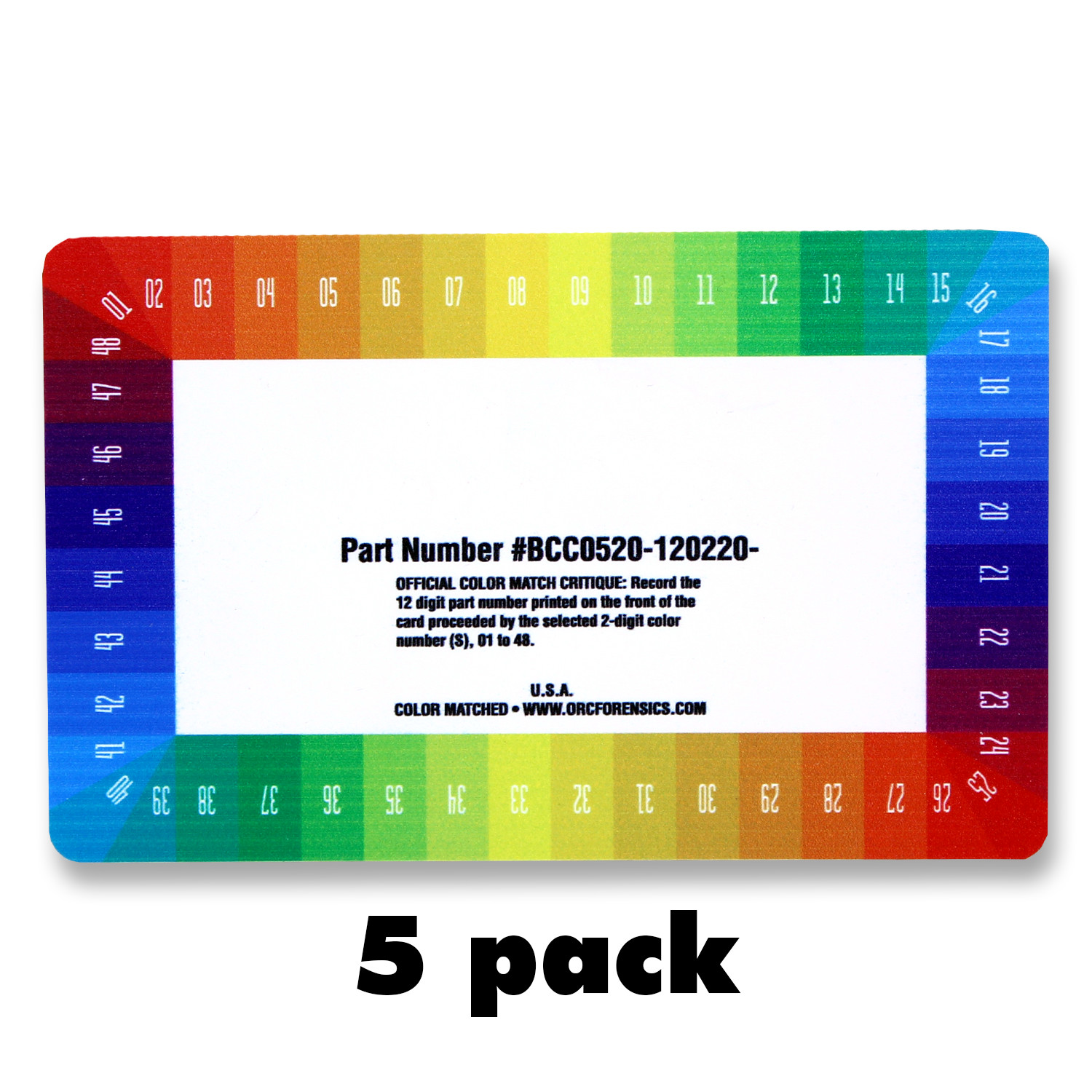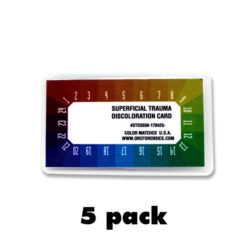Large Bruise Color Charts – Light Skin Tone – 5 Pack
$21.00
Like our Superficial Trauma Discoloration Cards, these larger Bruise Color Charts are unique and distinctive tools for identifying bruise colors on human skin. These handy guides, which were specifically designed for the forensic and medical markets, look similar to a color wheel, and associate a number identity to various bruise colors. These charts measure approximately 6 1/8″ X 3 7/8″ and are made of sturdy 0.03″ inch thick plastic.
Bruises change color over time, and this tool is used to analyze and label a color now that will be compared to others over time. What we provide is the exact language for specific bruise colors so that a standard definition can be shared between people or departments. Our Bruise Color Charts eliminate human interpretation in the description of bruise colors. It is incredibly difficult to use adjectives to describe colors, as there are thousands of shades and lighting sources can change between setups. The Bruise Color Chart’s numbering system is helpful in evening out that playing field.
There are two chart options to choose from, and they are each packaged in sets of 5. The two chart options offer shades of colors for either light skin tone or for darker skin tones. Each chart has 48 unique colors, and these colors/numbers line up consistently with our Superficial Trauma Cards. These charts are then used as a frame of reference to identify the human skin bruise color at a definite time. Where “dark red” could mean a different color to several people, a “light skin tone #24” is an unambiguous answer to start to begin analysis.
For consistency, we have a specific recommendation to recording each number/color. It is suggested to record each color number, i.e. “19”, along with the basic PCN and the “Color Matched Number” printed on the card, for example: #STD0520-070201-19. This gives you a traceable number back to ORC Forensics Standard Color Matched Certification System, which is a specifically designed for bruise color selection. If a camera is available, we suggest taking pictures with both the bruise and the STD™ Card in frame to provide conclusive evidence.
| Weight | 0.134 lbs |
|---|---|
| Dimensions | 6.125 × 3.875 × 0.156 in |
Related products
Cards and Charts
Superficial Trauma Discoloration Card – Dark Skin Tone – 5 Pack
Cards and Charts
Superficial Trauma Discoloration Card – Light Skin Tone – 5 Pack
Cards and Charts
Cards and Charts








